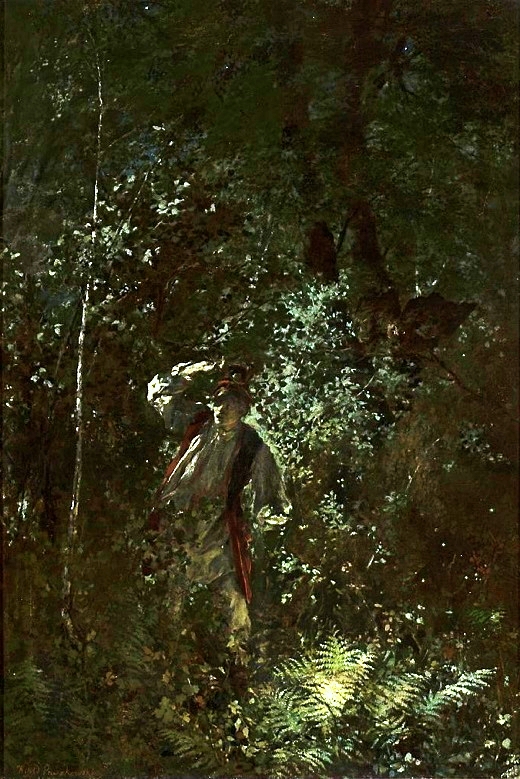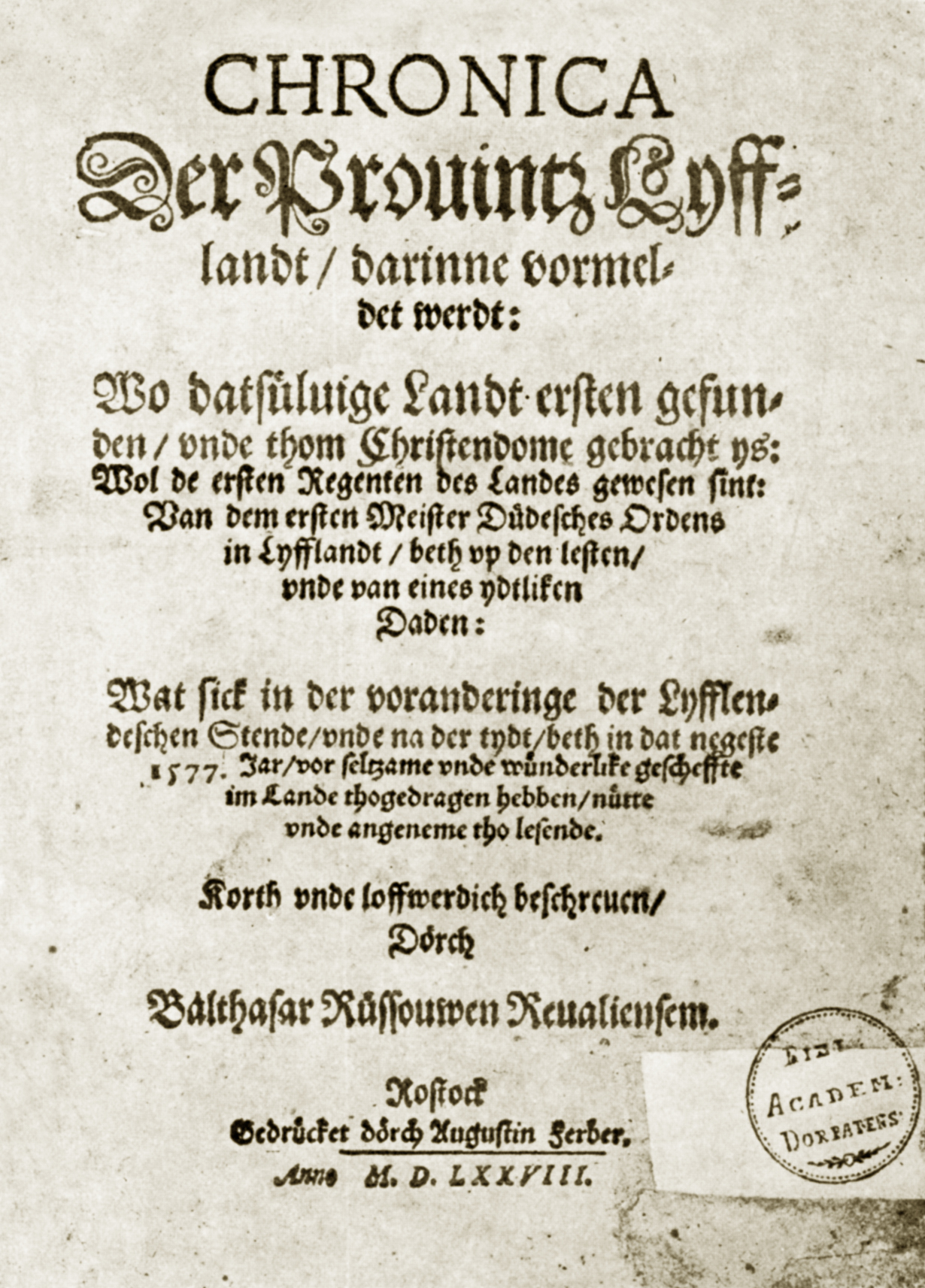|
Jāņi
Jāņi () is an annual Latvian festival celebrating the summer solstice. Although astronomically the solstice falls on 21 or 22 June, the public holidays—Līgo Day and Jāņi Day—are on 23 and 24 June. The day before Jāņi is known as Līgosvētki, Līgovakars or simply Līgo. On Jāņi, people travel from the city into the countryside to gather and eat, drink, sing and celebrate the solstice by observing the ancient folk traditions relating to renewal and fertility. It is celebrated both in Latvia and in many areas where the Latvian diaspora lives such as the United States, Canada, Argentina, and Australia. Title The name "Līgosvētki" was first used and introduced in 1900 in his Jāņi songs collection by Emilis Melngailis, who back in 1928 wrote in the newspaper "Jaunākās Ziņas": Traditions Use of plants Plant material, collected and used for decorative, therapeutic and other symbolic purposes, is important in the celebration of Jāņi. Most herbaceous plan ... [...More Info...] [...Related Items...] OR: [Wikipedia] [Google] [Baidu] |
Caraway Cheese
Caraway, also known as meridian fennel and Persian cumin (''Carum carvi''), is a biennial plant in the family Apiaceae, native to western Asia, Europe, and North Africa. Etymology The etymology of "caraway" is unclear. Caraway has been called by many names in different regions, with names deriving from the Latin ''cuminum'' (cumin), the Greek ''karon'' (again, cumin), which was adapted into Latin as ''carum'' (now meaning caraway), and the Sanskrit ''karavi'', sometimes translated as "caraway", but other times understood to mean "fennel".Katzer's Spice PagesCaraway Caraway (''Carum carvi'' L.)/ref> English use of the term caraway dates to at least 1440, possibly having Arabic origin.Walter William Skeat, Principles of English Etymology, Volume 2, page 319. 189Words of Arabic Origin/ref> Description The plant is similar in appearance to other members of the carrot family, with finely divided, feathery leaves with thread-like divisions, growing on stems. The main flower ... [...More Info...] [...Related Items...] OR: [Wikipedia] [Google] [Baidu] |
Fern Flower
The fern flower is a magic flower in Baltic mythology ( lt, paparčio žiedas, lv, papardes zieds), in Estonian mythology ( et, sõnajalaõis) and in Slavic mythology ( be, папараць-кветка, pl, kwiat paproci, russian: цветок папоротника, uk, цвіт папороті). Tradition According to the myth, this flower blooms for a very short time on the eve of the summer solstice (celebrated on June 21 or sometimes July 7). It brings fortune to the person who finds it. In some tales, it allows animal speech understanding. It is closely guarded by evil spirits and its picker can have earthly riches, which have never benefited anyone, so some leave it alone. Estonian and Baltic In the Estonian, Lithuanian and Latvian tradition, the fern flower is supposed to appear only on the night of 23 to 24 June during the celebration of the summer solstice which is called Jāņi in Latvia, Joninės or Rasos in Lithuania, Jaaniõhtu or Jaaniöö in Estoni ... [...More Info...] [...Related Items...] OR: [Wikipedia] [Google] [Baidu] |
Māras
Māras () or Māra Day ( lv, Māras diena; sometimes referred as Great Māra Day or Mother Day) was a Latvian festival, devoted to Māra, an ancient deity, and was celebrated on 15 August. According to solar calendar, Māras marks the midpoint between Jāņi, which is summer solstice, and Miķeļi, that represents the end of the harvest season. The actual date, likely, is the result of Christian influence, identifying Māra with Virgin Mary, whose devoted holiday (Assumption of Mary) is observed on 15 August. 1% svin šos svētkus. See also * Māra * Virgin Mary * Assumption of Mary The Assumption of Mary is one of the four Marian dogmas of the Catholic Church. Pope Pius XII defined it in 1950 in his apostolic constitution '' Munificentissimus Deus'' as follows: We proclaim and define it to be a dogma revealed by ... {{DEFAULTSORT:Maras Observances in Latvia Christianity in Latvia Public holidays in Latvia August observances Summer holidays (Northern Hem ... [...More Info...] [...Related Items...] OR: [Wikipedia] [Google] [Baidu] |
Pārdaugava
Pārdaugava (literally means "Trans" or "Over" -Daugava area) is an area most often associated with Riga, composed of several neighbourhoods on the west (left) bank of Daugava River. The name is literally translated as 'over Daugava'. In the late Soviet period (around 1990) in Riga appeared several sports teams with such name and previously were associated with the Soviet Daugava club (originally associated with Soviet Dynamo sports society). Those were football team FK Pārdaugava and hockey team Dinamo Riga (original) Dinamo Riga ( lv, Rīgas Dinamo) was a Soviet ice hockey club, based in Riga, Latvia. It was founded in 1946 and disestablished in 1995 as Pārdaugava Rīga. In 1949 to 1963 Dinamo Riga was joined with Daugava sports society which was sponsor .... References Neighbourhoods in Riga {{Vidzeme-geo-stub ... [...More Info...] [...Related Items...] OR: [Wikipedia] [Google] [Baidu] |
The Chronicle Of Livonia
''The'' () is a grammatical article in English, denoting persons or things that are already or about to be mentioned, under discussion, implied or otherwise presumed familiar to listeners, readers, or speakers. It is the definite article in English. ''The'' is the most frequently used word in the English language; studies and analyses of texts have found it to account for seven percent of all printed English-language words. It is derived from gendered articles in Old English which combined in Middle English and now has a single form used with nouns of any gender. The word can be used with both singular and plural nouns, and with a noun that starts with any letter. This is different from many other languages, which have different forms of the definite article for different genders or numbers. Pronunciation In most dialects, "the" is pronounced as (with the voiced dental fricative followed by a schwa) when followed by a consonant sound, and as (homophone of the archaic pr ... [...More Info...] [...Related Items...] OR: [Wikipedia] [Google] [Baidu] |
Balthasar Russow
Balthasar Russow (1536–1600) was one of the most important Livonian and Estonian chroniclers. Russow was born in Reval, Livonia (now Tallinn, Estonia). He was educated at an academy in Stettin, Pomerania (now Szczecin, Poland). He was the Lutheran pastor of the Estonian congregation at the Holy Spirit Church in Reval from 1566 until his death. Russow is most famous for his Low German-language chronicle ' describing the history of Livonia, especially the decline of the Livonian Order and the period of the Livonian War (1558–83). The chronicle was first printed in Rostock in Mecklenburg in 1578 and quickly sold out. The revised edition was printed in 1584. In his work Russow was highly critical of the squander and immorality of the Livonian upper classes. He also complained about the superstitious beliefs and pagan traditions of the Estonian peasants and the venality of mercenary armies during the wars. He praised the rule of the new regional power, Sweden. Russow is the ... [...More Info...] [...Related Items...] OR: [Wikipedia] [Google] [Baidu] |
John The Baptist
John the Baptist or , , or , ;Wetterau, Bruce. ''World history''. New York: Henry Holt and Company. 1994. syc, ܝܘܿܚܲܢܵܢ ܡܲܥܡܕ݂ܵܢܵܐ, Yoḥanān Maʿmḏānā; he, יוחנן המטביל, Yohanān HaMatbil; la, Ioannes Baptista; cop, ⲓⲱⲁⲛⲛⲏⲥ ⲡⲓⲡⲣⲟⲇⲣⲟⲙⲟⲥ or ; ar, يوحنا المعمدان; myz, ࡉࡅࡄࡀࡍࡀ ࡌࡀࡑࡁࡀࡍࡀ, Iuhana Maṣbana. The name "John" is the Anglicized form, via French, Latin and then Greek, of the Hebrew, "Yochanan", which means "God in Christianity, YHWH is gracious"., group="note" ( – ) was a mission preacher active in the area of Jordan River in the early 1st century AD. He is also known as John the Forerunner in Christianity, John the Immerser in some Baptists, Baptist Christianity, Christian traditions, and John the Baptist in Islam, Prophet Yahya in Islam. He is sometimes alternatively referred to as John the Baptiser. John is mentioned by the History of the Jews in the Roman ... [...More Info...] [...Related Items...] OR: [Wikipedia] [Google] [Baidu] |
Barley
Barley (''Hordeum vulgare''), a member of the grass family, is a major cereal grain grown in temperate climates globally. It was one of the first cultivated grains, particularly in Eurasia as early as 10,000 years ago. Globally 70% of barley production is used as animal fodder, while 30% as a source of fermentable material for beer and certain distilled beverages, and as a component of various foods. It is used in soups and stews, and in barley bread of various cultures. Barley grains are commonly made into malt in a traditional and ancient method of preparation. In 2017, barley was ranked fourth among grains in quantity produced () behind maize, rice and wheat. Etymology The Old English word for barley was ', which traces back to Proto-Indo-European and is cognate to the Latin word ' "flour" (''see corresponding entries''). The direct ancestor of modern English ''barley'' in Old English was the derived adjective ''bærlic'', meaning "of barley". The first citation ... [...More Info...] [...Related Items...] OR: [Wikipedia] [Google] [Baidu] |
Cheese
Cheese is a dairy product produced in wide ranges of flavors, textures, and forms by coagulation of the milk protein casein. It comprises proteins and fat from milk, usually the milk of cows, buffalo, goats, or sheep. During production, milk is usually acidified and the enzymes of either rennet or bacterial enzymes with similar activity are added to cause the casein to coagulate. The solid curds are then separated from the liquid whey and pressed into finished cheese. Some cheeses have aromatic molds on the rind, the outer layer, or throughout. Over a thousand types of cheese exist and are produced in various countries. Their styles, textures and flavors depend on the origin of the milk (including the animal's diet), whether they have been pasteurized, the butterfat content, the bacteria and mold, the processing, and how long they have been aged. Herbs, spices, or wood smoke may be used as flavoring agents. The yellow to red color of many cheeses is produc ... [...More Info...] [...Related Items...] OR: [Wikipedia] [Google] [Baidu] |


.png)


.jpg)